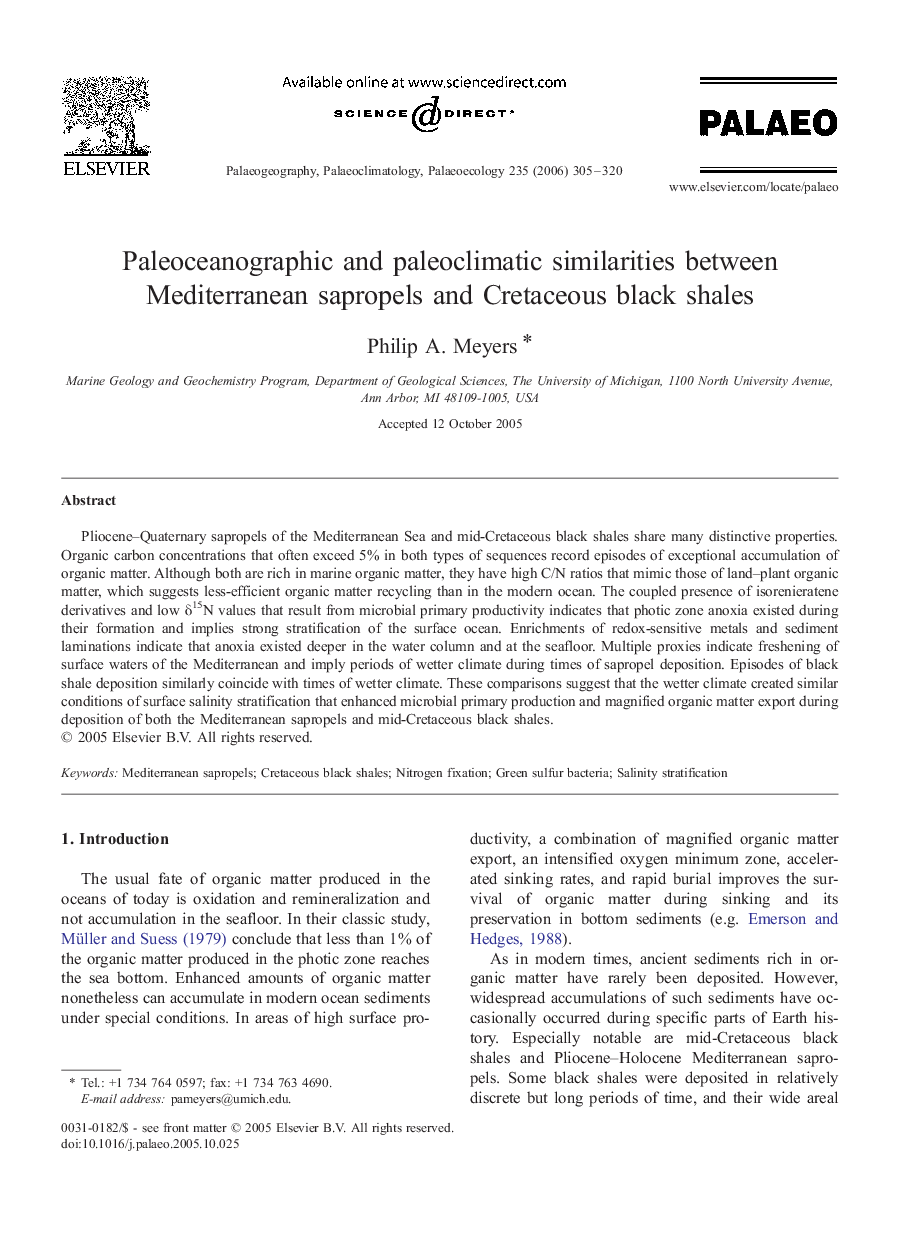| Article ID | Journal | Published Year | Pages | File Type |
|---|---|---|---|---|
| 4469462 | Palaeogeography, Palaeoclimatology, Palaeoecology | 2006 | 16 Pages |
Pliocene–Quaternary sapropels of the Mediterranean Sea and mid-Cretaceous black shales share many distinctive properties. Organic carbon concentrations that often exceed 5% in both types of sequences record episodes of exceptional accumulation of organic matter. Although both are rich in marine organic matter, they have high C/N ratios that mimic those of land–plant organic matter, which suggests less-efficient organic matter recycling than in the modern ocean. The coupled presence of isorenieratene derivatives and low δ15N values that result from microbial primary productivity indicates that photic zone anoxia existed during their formation and implies strong stratification of the surface ocean. Enrichments of redox-sensitive metals and sediment laminations indicate that anoxia existed deeper in the water column and at the seafloor. Multiple proxies indicate freshening of surface waters of the Mediterranean and imply periods of wetter climate during times of sapropel deposition. Episodes of black shale deposition similarly coincide with times of wetter climate. These comparisons suggest that the wetter climate created similar conditions of surface salinity stratification that enhanced microbial primary production and magnified organic matter export during deposition of both the Mediterranean sapropels and mid-Cretaceous black shales.
